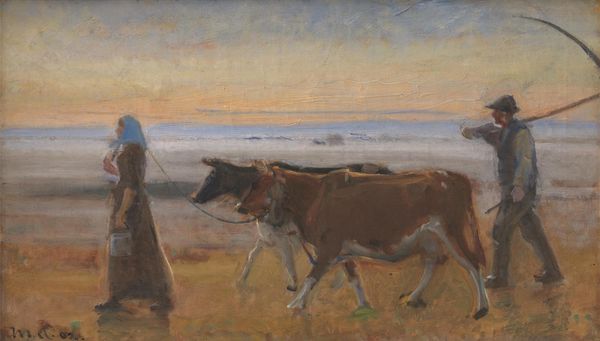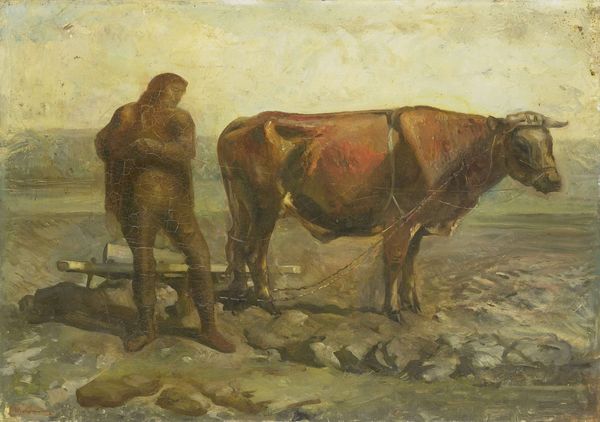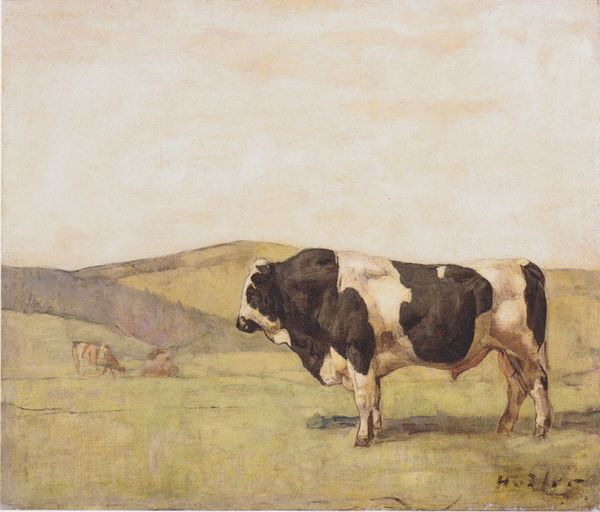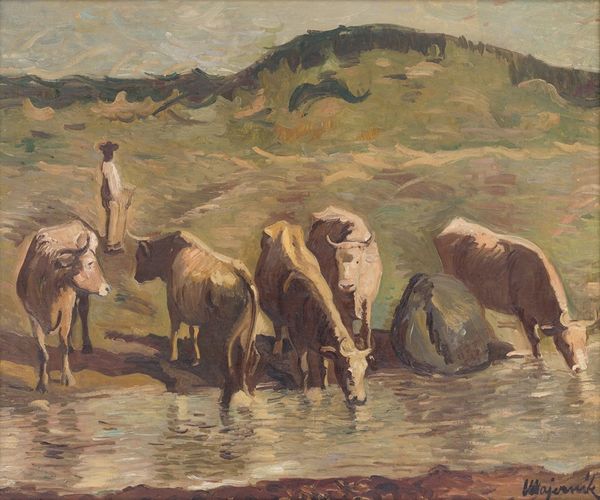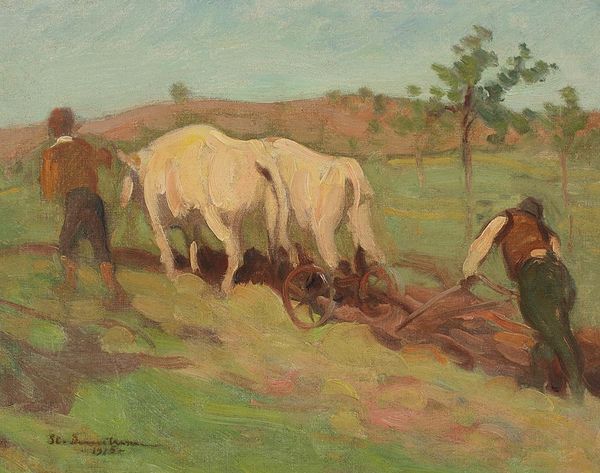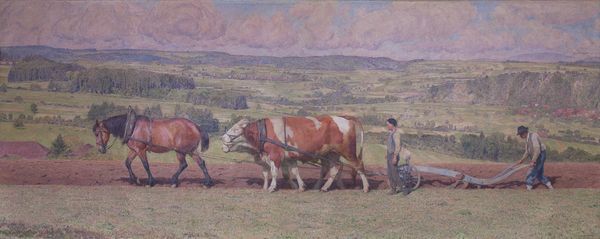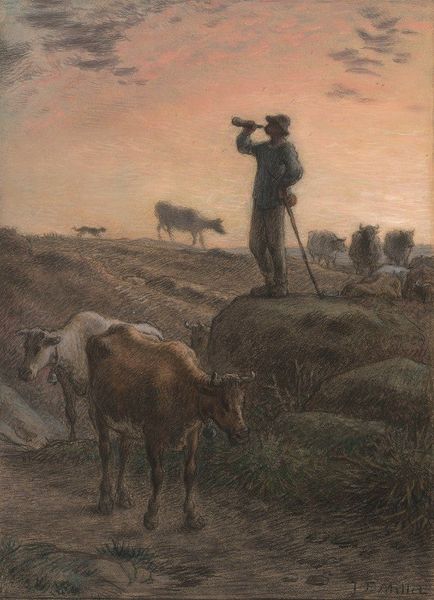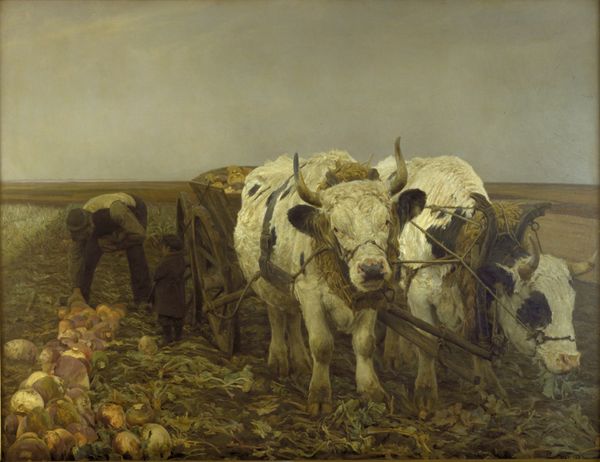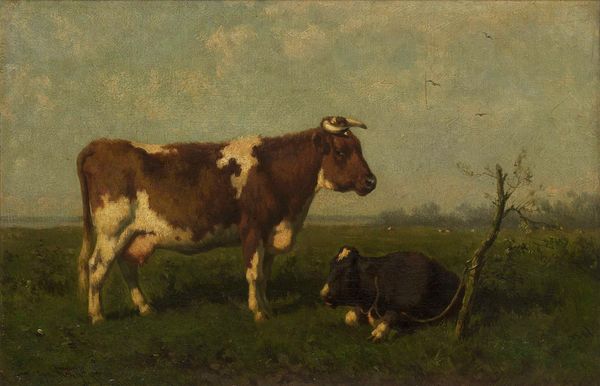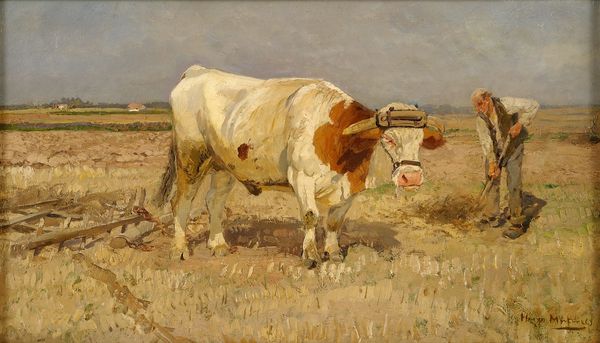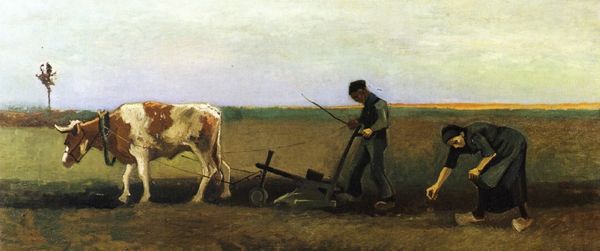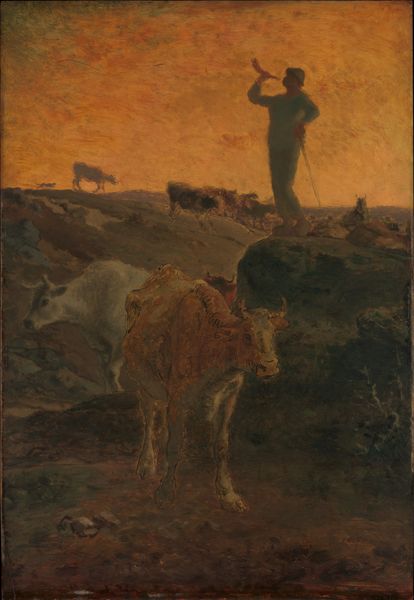
painting, oil-paint
#
figurative
#
painting
#
oil-paint
#
landscape
#
figuration
#
oil painting
#
genre-painting
#
realism
Copyright: Public Domain: Artvee
Editor: So, this is Jozef Hanula's "Ploughing," painted in 1913 with oil on canvas. It feels very grounded, literally, with the strong horizontal lines of the field and the subdued palette. What do you see in this piece beyond a simple agrarian scene? Curator: I see a meditation on labor, gender, and the shifting societal structures of early 20th-century Europe. Consider the context: 1913, on the cusp of immense social upheaval. This isn’t just a depiction of farming; it’s a tableau reflecting the enduring toil of the working class. Who benefits from their effort? And who carries the burden? Note the woman with the whip; what does her presence suggest about the roles within this rural family and larger societal expectations? Editor: That’s interesting; I hadn't considered the gender dynamics so explicitly. I was more focused on the composition, the way the artist leads your eye across the field. But the woman definitely seems central to the image. Curator: Exactly. How might we read her stance in relation to the animals? Are they being forced to work? Her clothing appears more traditional; could that indicate different gendered expectations that she must adhere to while assisting in her husbands job? The landscape, while seemingly passive, bears witness to this interaction. Also, what about the crows in the sky; are they ominous or hopeful? This interplay highlights the tensions and often unspoken power dynamics inherent in labor. What do you make of the muted colours, especially when so many of Hanula's contemporaries painted colourful scenes? Editor: Maybe the muted colours reflect a certain harsh reality, a life devoid of excessive vibrancy or excess, focusing on simple living. I can see the painting as a socio-political statement, not just a landscape. It's been really interesting to explore the many layered ideas presented in Hanula's painting. Curator: Precisely. It's a powerful reminder that even seemingly simple scenes can offer complex commentaries on society.
Comments
No comments
Be the first to comment and join the conversation on the ultimate creative platform.
